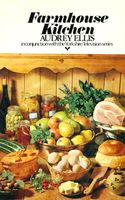Advertisement
Bottling and canning fresh produce
Appears in
By Audrey Ellis
Published 1971
The principal of preserving by sterilizing and excluding bacteria-laden air from the bottles has only recently been understood, which explains why salting and smoking far preceded this process in the farmhouse kitchen. Even the making of jam and other sweet preserves is a less venerable art than either winemaking or meat curing, mainly because sugar was once only readily available in the form of honey; and this is why every farmhouse, and indeed almost every hovel, kept a few skeps of bees. Sugar cane was first known in Europe in the seventh century, and by the time this country had emerged from the dark ages into the medieval era of good husbandry and more luxurious eating, it was beginning to be imported. The returning Crusaders introduced sugar from the East. However it was a rare and expensive commodity, although the sugar cane industry flourished under the Portuguese in Madeira from the early fifteenth century, and in the New World from about a hundred years later. Beet sugar, on which we now greatly depend, was a failure here in the early 1830s, and in fact only succeeded in 1912, in time to be of great service to us in the two world wars.

